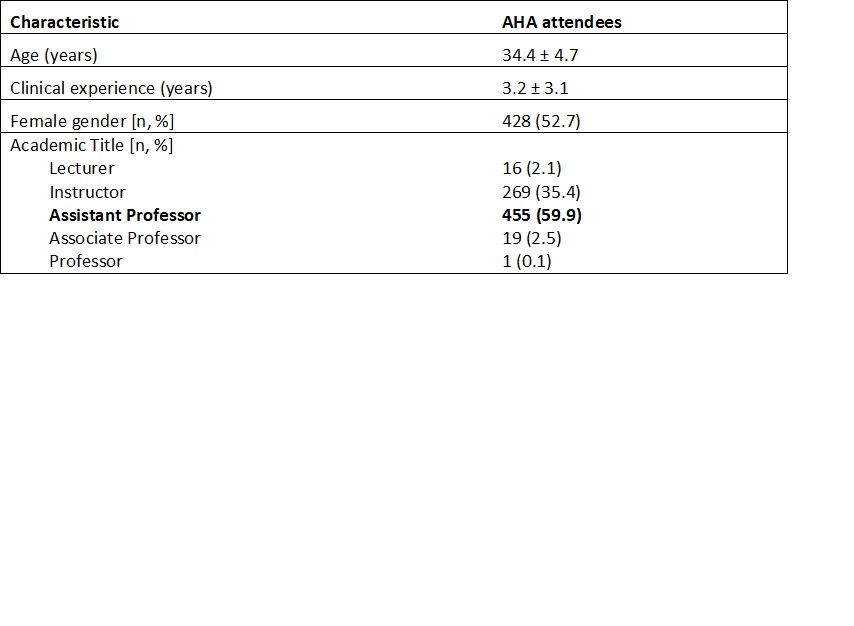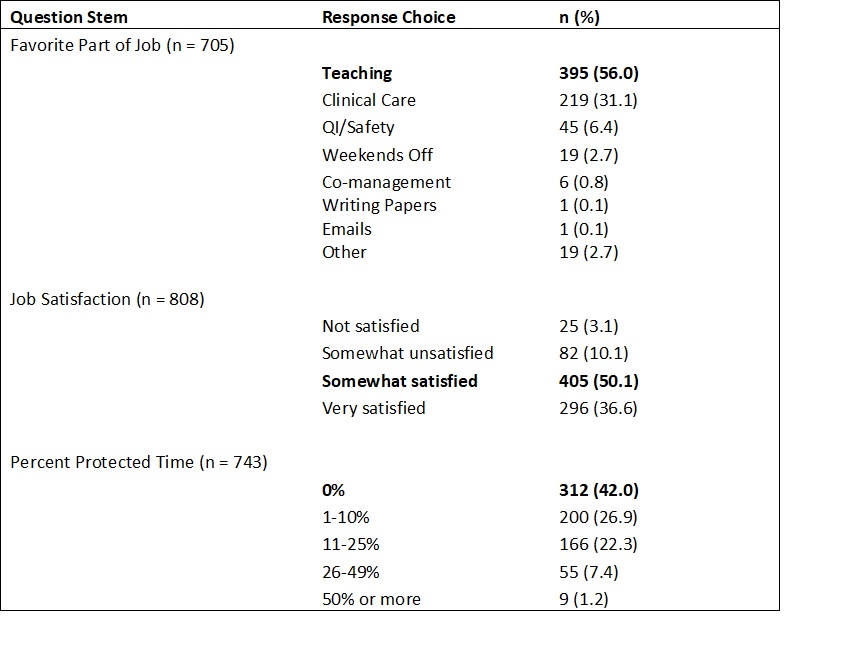Background: Academic hospitalists engage in multiple and varied career directions, including medical education, quality improvement, leadership, and research. In 2009, the Society of Hospital Medicine (SHM), the Society of General Internal Medicine (SGIM), and the Association of Chiefs and Leaders of General Internal Medicine (ACLGIM) launched the Academic Hospitalist Academy (AHA), an annual conference that aims to provide hospitalists with educational, scholarly, and professional development skills. Our study describes the demographics and career priorities of academic hospitalists who participated in the AHA.
Methods: As part of AHA enrollment, all attendees are asked to complete an anonymized, voluntary survey prior to the start of the conference. The survey includes questions about participant demographics, academic rank, job satisfaction, and career priorities. We collected the survey responses from all 11 years of the AHA (2009 to 2019) and described trends in participant demographics and responses.
Results: A total of 812 of 817 AHA participants who viewed the survey completed it (99% completion rate). The number of survey respondents in a given year ranged from 48 to 89. The mean age of participants was 34 years (95% confidence interval [CI] 25 – 44 years), and the mean years of hospitalist clinical experience was 3.2 [0 – 9.4 years] (Table 1). The proportion of participants that were female increased from 42.2% in 2009 to 60% in 2018 and 2019 (p-value for linear test for trend is 0.001). Most hospitalists were somewhat or very satisfied with their job. Hospitalists consistently identified teaching and clinical care as the best parts of their job (56.0% and 31.1%, respectively, Table 2). Improving teaching skills was the most common primary conference goal listed by attendees (48.9%), followed by networking, promotion, scholarship, and quality improvement.
Conclusions: Over the 11 years of the Academic Hospitalist Academy, increasing proportions of women enrolled. Teaching was the leading contributor to job satisfaction, followed by clinical care. Attendees considered improving teaching skills as their primary conference goal. With these data, AHA and other groups engaged in hospitalist career development can better tailor their training to the needs and priorities of academic hospitalists.


